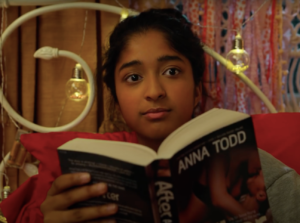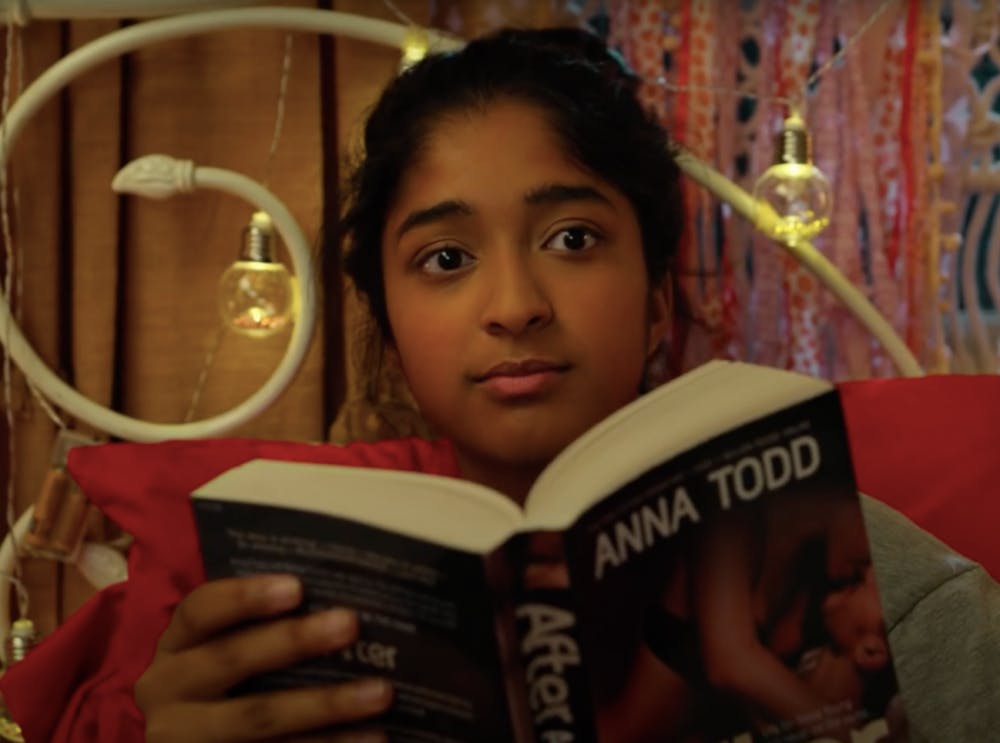By Ankita Patil
Correspondent
The American coming-of-age comedy-drama series “Never Have I Ever,” created by Mindy Kaling and Lang Fisher, streamed on Netflix on April 27 and has boomed with popularity.
The highly-rated show tells the story of Devi (Maitreyi Ramakrishnan), a high school sophomore in Sherman Oaks, California, whose father recently died of a heart attack. She is in constant rivalry with peer Ben Gross (Jaren Lewison), who she has competed against since childhood, and is processing her grief in a number of misguided ways — one of which is her attempt to lose her virginity to the hottest boy in school, Paxton Hall-Yoshida (Darren Barnet).

Wrapped up in the ten episodes, viewers watch the complicated life of a first-generation Indian American teenager — but many cannot not relate to Devi’s experiences. From the way she dressed to how she boldly asked to hook up with token-boy Paxton, the image of Devi did not resonate well, and many scenes succumbed to South Asian stereotypes.
In the episode, “...Felt Super Indian,” Devi attends Ganesh Puja with her mother, Nalini (Poorna Jagannathan), and cousin, Kamala (Richa Moorjani), at the local high school. While finding a place to sit and eat their meal, a Hindu woman is seen eating alone because she has been ostracized from society for marrying a Muslim. Kamala converses with the woman who, instead of advocating for being content with her decision to marry the man she loves, ends up telling Kamala to abide by her parent’s wishes if she wants to maintain her reputation in society.
In a later episode, Nalini winds up in Devi’s therapist’s office, and says that “therapy is only for white people.” Although these scenes were created to be relatable, it fell short on establishing an accepting Indian community that is moving in a progressive direction.
However, some young Indian Americans watching “Never Have I Ever” expect the character to be a photocopy version of themselves, leading to unrealistic expectations for the show.
“It’s one story of one brown girl. What happens is that there are not many shows or movies that highlight the life of an Indian American growing up in Western culture, and when those productions do come out, we expect the scenes to be perfect and be ones that everyone can relate to — and that is a lot to ask for from one show,” said Shagun Patel, a freshman sociology major.
The show also took parts of Kaling’s life, such as being an Indian Tamil who grew up in America. Also similar to Kaling, Devi’s mother is a doctor and her father loved tennis legend John McEnroe. However, the experiences Indian Americans have in the Northeast could be completely different had the events unfolded on the West Coast.
Is “Never Have I Ever” an idiosyncratic and flawed show? Yes. Did the cringiness of Devi and her friends making TikToks make me want to look away from the screen? Yes. But many can relate to scenes with Indian aunties gossiping or Devi’s mom scolding her for letting her books touch the ground.
Kaling and Fisher produced a show that didn’t solely focus on a high school love triangle. Devi had experienced trauma that she avoided and took it out on her therapist. But through the help of her friends, whose own stories blended seamlessly within the plot, Devi came to find peace with the tumultuous events in her life, and grew from them, becoming a stronger Indian American woman at the end.







